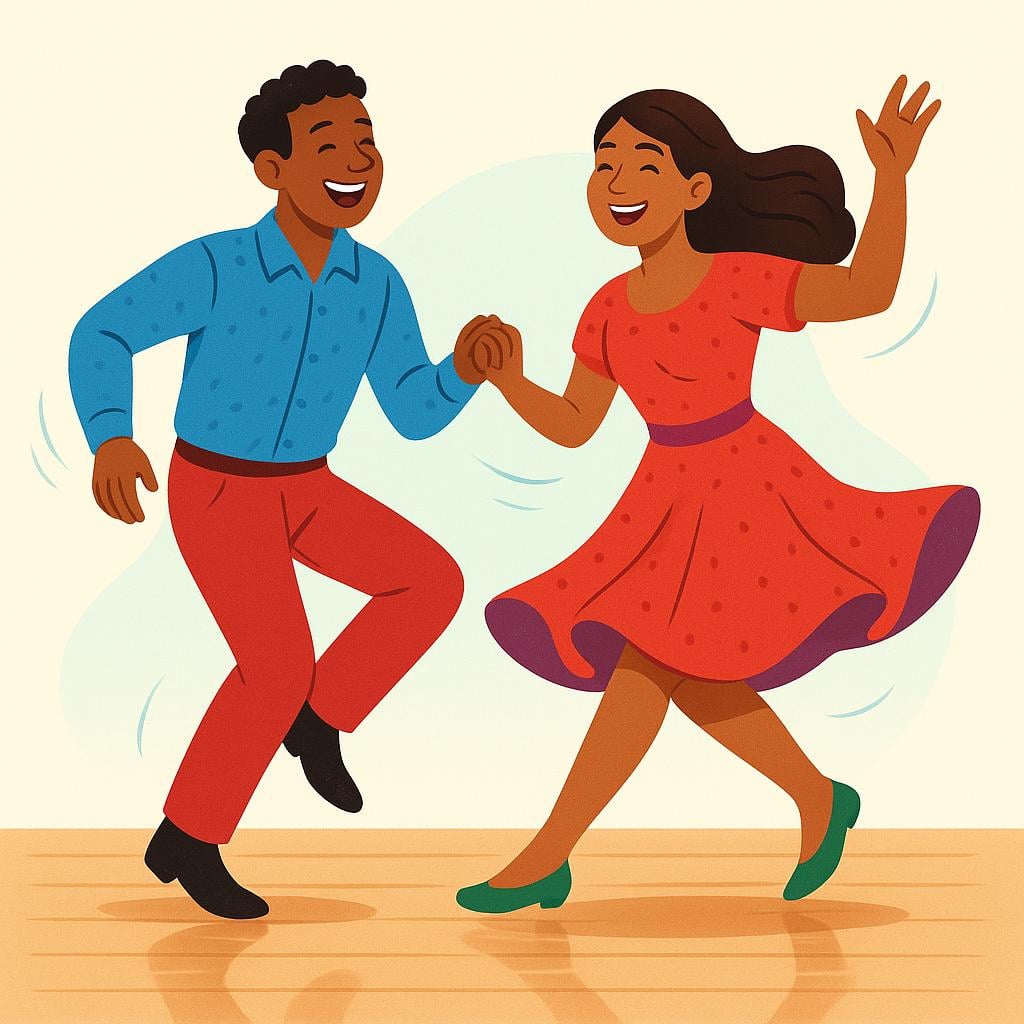baile
/BAI-leh/
dance

As a masculine noun, baile means a dance or a ball, referring to the social act or event.
baile(Noun)
dance
?the act of dancing or a specific type of dance
,ball
?a formal dance event
party
?an event where dancing is the main activity
📝 In Action
Me encanta el baile flamenco.
A1I love flamenco dancing.
¿Vas a ir al baile de la escuela el viernes?
A2Are you going to the school dance on Friday?
Organizaron un baile de caridad para recaudar fondos.
B1They organized a charity ball to raise funds.
💡 Grammar Points
It's a Masculine Noun
Even though it ends in 'e', 'baile' is masculine. Always use 'el' or 'un' with it. For example, 'El baile fue divertido' (The dance was fun).
⭐ Usage Tips
'Baile' vs. 'Danza'
Use 'baile' for social dancing you do for fun (like salsa, tango, or dancing at a party). Use 'danza' for more artistic or performance-based styles, like ballet ('danza clásica') or modern dance.

Baile is a conjugated form of the verb 'bailar' (to dance), used for wishes (e.g., 'that he/she dance') or formal commands.
📝 In Action
Mi profesor quiere que yo baile en el festival.
A2My teacher wants me to dance in the festival.
No creo que él baile tango.
B1I don't think that he dances tango.
Señor, ¡baile con su esposa!
A2Sir, dance with your wife!
💡 Grammar Points
A Special Form for Wishes and Doubts
This form, 'baile', is used after phrases that express wishes, doubts, or emotions. For example, 'Espero que él baile' (I hope that he dances).
Giving a Polite Command
To politely tell someone you address as 'usted' to dance, you use this form: '¡Baile, por favor!' (Dance, please!).
❌ Common Pitfalls
Using 'baila' instead of 'baile'
Mistake: "Incorrect: Espero que ella baila bien."
Correction: Correct: Espero que ella baile bien. The phrase 'Espero que...' (I hope that...) signals the need for this special 'baile' form.
🔄 Conjugations
indicative
present
preterite
imperfect
subjunctive
present
imperfect
✏️ Quick Practice
💡 Quick Quiz: baile
Question 1 of 1
Which sentence uses 'baile' as a noun meaning a dance event?
📚 More Resources
Frequently Asked Questions
What's the real difference between 'baile' and 'danza'?
'Baile' is what you do for fun at a party or a club; it's social dancing. 'Danza' is more like an art form, something you'd see performed on a stage, like ballet or contemporary dance. Think 'dancing' (baile) vs. 'dance' as art (danza).
When do I use 'baile' vs. 'baila'?
'Baila' is the simple present form for 'he/she/you (formal) dances' (Ella baila salsa). It's also the command you give to a friend (¡Baila!). 'Baile' is a special form used after expressions of wish, doubt, or emotion ('Espero que ella baile') and for formal commands ('¡Baile usted!').